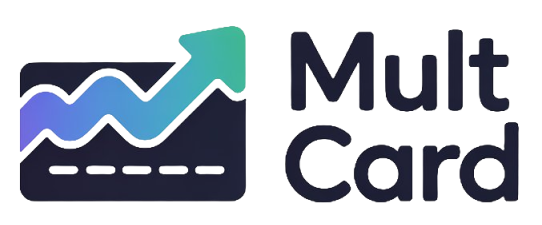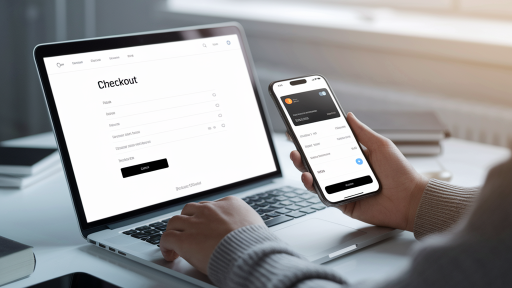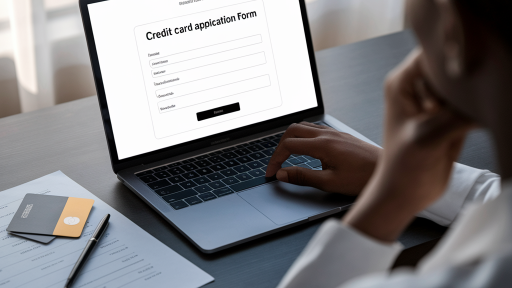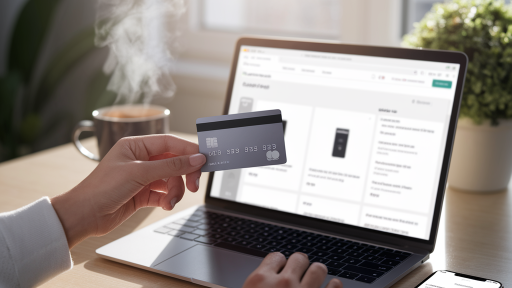Navigating the world of finance with a less-than-perfect credit score can feel like an uphill battle. When you need the flexibility and security of a credit card, seeing application after application denied is disheartening. It’s a common catch-22: you need credit to build credit, but you can’t get credit without a good score.
The good news is that this cycle can be broken. There are specific pathways and financial products designed for individuals in your exact situation. Getting an online credit card with a low credit score is not only possible but can be a pivotal first step toward rebuilding your financial health and unlocking future opportunities.
Understanding Why Your Credit Score Matters
Before diving into the “how,” it’s crucial to understand the “why.” Your credit score is a three-digit number that represents your creditworthiness to lenders. It’s a quick snapshot that helps banks and credit card companies assess the risk of lending you money. A lower score suggests a higher risk, which is why approvals can be difficult to come by.
Several key factors influence this number:
- Payment History (approx. 35% of your score): This is the most significant factor. Even one late payment can have a negative impact.
- Amounts Owed / Credit Utilization (approx. 30%): This refers to how much of your available credit you are using. High balances can signal financial distress.
- Length of Credit History (approx. 15%): A longer history of responsible credit management is generally better.
- Credit Mix (approx. 10%): Lenders like to see that you can manage different types of credit, such as installment loans (like a car loan) and revolving credit (like credit cards).
- New Credit (approx. 10%): Opening several new accounts in a short period can temporarily lower your score.
Understanding these elements is the first step because the card you get will be a tool to improve each one of them, particularly your payment history and credit utilization.
Types of Credit Cards Available for Low Credit Scores
You aren’t limited to a single option. The market has evolved to offer several types of credit cards tailored to those looking to build or rebuild their credit. Each comes with its own set of rules, benefits, and drawbacks.
Secured Credit Cards: The Most Accessible Option
This is often the best and most recommended starting point. A secured credit card works just like a regular credit card for making purchases, but it requires a refundable security deposit to open the account. This deposit typically equals your credit limit. For example, a $300 deposit will usually get you a $300 credit limit.
The deposit minimizes the risk for the issuer. If you fail to pay your bill, the bank can use your deposit to cover the debt. For you, it’s a powerful tool because most secured card issuers report your payment activity to the three major credit bureaus (Experian, Equifax, and TransUnion). Consistent, on-time payments will directly contribute to improving your credit score.
Credit Builder Cards and Loans
These are specialized financial products with the sole purpose of helping you build a positive credit history. A credit builder loan, for instance, works in reverse. You don’t get the money upfront. Instead, you make regular payments to the lender, who holds the funds in a savings account. Once you’ve paid the full loan amount, the funds are released to you. Throughout this process, your on-time payments are reported to the credit bureaus.
Some fintech companies also offer “credit builder” cards that are a hybrid of a secured card and a debit card, linking to your bank account to secure your spending limit without a traditional credit check.
Unsecured Credit Cards for Bad Credit
An unsecured card is what most people think of as a “normal” credit card—it doesn’t require a security deposit. While they exist for people with low credit scores, they are harder to qualify for and often come with less favorable terms. Be prepared for:
- High Annual Fees: Some cards charge a significant fee just to keep the account open.
- High Interest Rates (APRs): The interest charged on any balance you carry will be much higher than on prime credit cards.
- Low Credit Limits: You may be approved for a very small limit, such as $200 or $300.
- Various Other Fees: Look out for monthly maintenance fees, application fees, or program fees.
It’s essential to read the fine print very carefully with these cards to ensure the fees don’t outweigh the credit-building benefits.
Retail Store Cards
Credit cards offered by department stores, gas stations, or large retailers can sometimes be easier to get approved for than general-purpose Visa or Mastercard cards. They are designed to encourage loyalty and spending at that specific store.
The main drawback is that you can typically only use them at that retailer (or its family of brands). They also tend to have very high APRs. However, if it’s a store you frequent, it can be a viable option for establishing a positive payment history on your credit report.
Comparative Table: Choosing the Right Card for You
To help you visualize the options, here is a breakdown of the most common types of cards for building credit.
| Card Type | How It Works | Best For | Typical Requirements |
|---|---|---|---|
| Secured Credit Card | Requires a refundable security deposit that usually becomes your credit limit. | Almost anyone looking to build or rebuild credit, especially those with cash for a deposit. | Bank account, proof of income, security deposit ($200+). Very high approval odds. |
| Unsecured Card (for Bad Credit) | Functions like a standard credit card with no deposit required. | Individuals who cannot afford a deposit but are willing to accept high fees and interest rates. | Some level of steady income. May still be denied for very low scores or recent bankruptcies. |
| Retail Store Card | A credit card that can only be used at a specific retailer or group of stores. | Frequent shoppers of a particular brand who can benefit from store-specific rewards. | Often have more lenient approval criteria than traditional unsecured cards. |
Step-by-Step Guide to Applying for an Online Credit Card
Once you’ve identified the right type of card for you, follow these steps to maximize your chances of approval and set yourself up for success.
-
Step 1: Check Your Credit Score and Report
You can’t fix a problem you don’t understand. Before you apply for anything, get a clear picture of your credit health. You are entitled to a free copy of your credit report from each of the three main bureaus once a year through the official government-mandated site, AnnualCreditReport.com. Review it carefully for any errors or fraudulent accounts. Disputing inaccuracies can sometimes provide a quick boost to your score.
-
Step 2: Research and Compare Your Options
Don’t just apply for the first card you see an ad for. Look specifically for cards marketed as “for bad credit,” “secured,” or “credit building.” Compare the key features: the annual fee, the required security deposit (if any), the APR, and, most importantly, confirm that the issuer reports to all three credit bureaus.
-
Step 3: Utilize Pre-qualification Tools
This is a critical step. Many online lenders offer a pre-qualification or pre-approval process. This allows you to see if you are likely to be approved for a card without a “hard inquiry” on your credit report. A hard inquiry (which happens when you formally apply) can temporarily lower your score by a few points. Too many hard inquiries in a short time can be a red flag for lenders. Using pre-qualification tools helps you shop around for the best fit without damaging your score.
-
Step 4: Prepare Your Information and Apply
When you’ve found a good match and feel confident about your chances, it’s time to apply. You will typically need to provide your full legal name, Social Security Number, date of birth, address, and information about your annual income and monthly housing payment. Be honest and accurate on your application, as providing false information is illegal and can lead to immediate denial.
What to Do if Your Application is Denied
Even after careful preparation, a denial can happen. Don’t be discouraged. By law, the lender must send you an “adverse action notice” explaining the reason for the denial. This letter is a valuable piece of information. It might point to a specific issue on your credit report, like a high debt-to-income ratio or a recent delinquency. Use this feedback to work on the specific problem areas before you try applying again in a few months.
Smart Strategies to Use Your New Card and Build Credit
Getting approved is only the beginning. The real work—and the real benefit—comes from how you manage the card.
- Make 100% of Your Payments On Time: This is the golden rule. Set up automatic payments or calendar reminders. Even a single late payment can set your progress back significantly.
- Keep Your Credit Utilization Low: Aim to use less than 30% of your available credit limit. For a card with a $300 limit, that means keeping your balance below $90. To achieve the best scores, experts like Experian suggest keeping it even lower, under 10%. A simple way to do this is to use the card for a small, recurring purchase (like a streaming service) and pay it off in full each month.
- Pay Your Bill in Full: While you only have to make the minimum payment, paying the entire statement balance each month will help you avoid costly interest charges.
- Monitor Your Progress: Many card issuers and banking apps now provide free credit score monitoring. Watch your score improve over time—it’s a great motivator!
After six to twelve months of responsible use, your score should improve. At that point, you might be able to get your security deposit back, ask for a credit limit increase, or even qualify for a better, unsecured credit card with more rewards.
Conclusion: Your Path to a Better Financial Future
Having a low credit score is a temporary situation, not a permanent identity. By strategically choosing and responsibly using the right financial tools, you can take control of your financial narrative. Secured cards, credit builder products, and other options are designed to be stepping stones. They provide the opportunity to prove your creditworthiness and build a positive payment history, which is the foundation of a healthy credit score.
The journey requires patience and discipline, but the reward is significant. A better credit score opens doors to better interest rates on car loans, mortgages, and more, saving you thousands of dollars over your lifetime. For trusted information and resources, you can always refer to the official guidance on how to get an online credit card with a low credit score from the Consumer Financial Protection Bureau.




